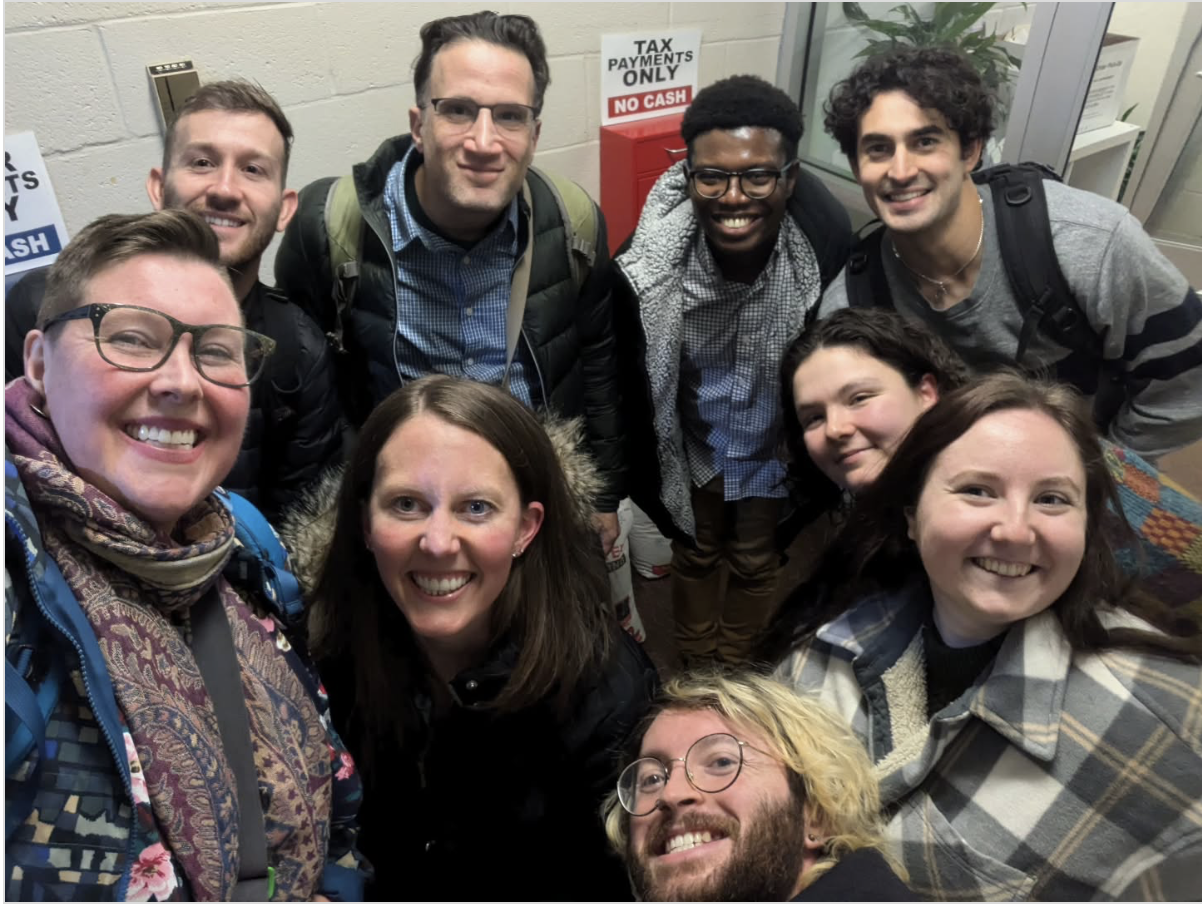How Chatham Students Made a Strategic Plan for Mars, PA
Chatham University students pose for a selfie with Professor of Business Miron Avidan (rear, second from left) after meeting with Mars Borough officials.
A group of Chatham University students in December presented Mars Borough with a strategic 5-year plan to revitalize the municipality’s infrastructure and downtown business district.
It was part of their Leadership for Transitions to Sustainability course taught by Professor Business Miron Avidan. It’s the latest fruit borne from the multiyear partnership between the University and the borough.
Pulse@ChathamU spoke with three students who worked on the project. Here’s what they had to say:
Bernard Sekey, MBA+MSUS ’25
Bernard Sekey lives and works in Kumasi, located in the Ashanti Region of Ghana. It’s the second most populous city in the country. Compared to what he’s seen at home, the borough of Mars—with a population of about 1,500 people—is worlds away.
“It’s a big mindset shift,” he said.
Working on the downtown revitalization part of project, he quickly realized that it was going to take more than beautifying the small town. “It is not just planting green stuff, but also helping the economy,” he said.
Working with Mars Borough elected officials, such as Mayor Greg Hartung, residents, and local business owners, Sekey and his colleagues listened to what people wanted for the borough: better walkability, more foot traffic in local stores, and recreational opportunities.
Sarah Warner, MBA+MSUS ’25
Pursuing a Master of Business Administration and Master of Sustainability dual degree, Sarah Warner is used to speaking the language of the private sector. Working with Mars Borough gave her a whole new set of vocabulary.
“It’s become the most civic-oriented course that I’ve taken so far,” she said. “It was really focused on how sustainability can be applied in the public sector.”
“It was really neat to be able to slow down for a minute and see how these challenges are facing the community in a wider scope than we were expecting, in terms of timeline,” she added.
Among the problems she addressed with borough stakeholders was stormwater management, something the municipalities has been challenged with in the past.
They proposed using things like rain gardens (you can see one of those on Chatham’s Shadyside Campus) and bioswales to control stormwater overflow, a problem due to Breakneck Creek, which poses flood risks to Mars and other nearby municipalities. But reinvigorating the downtown area went beyond looking at ecological concerns.
“People often think that sustainability is just focused on environmentalism, but it was really important for us to apply a holistic approach to sustainability here,” she said.
Holly Tyson, MSUS ’25
Holly Tyson found a lot of benefits to working with Mars. “It felt like it was building on the shoulders on the excellent and thorough work that was done by graduate students at Chatham before us,” she said.
Tyson and Warner presented their findings and suggestions to the borough council. One of the crucial parts of that presentation was driving home the importance of resources and where to find them.
“A lot of municipalities … have a hard time finding the resources, human and financial, to get things accomplished,” Tyson said.
Asked how this project fit alongside other work she’s done as a sustainability student, Tyson said, “It’s about centering joy in the work we want to do to make the world a better place. So, when we had the opportunity to work with a really fun and dynamic and unique town, like Mars, PA, it really allowed us to play and have some exciting and quirky ideas.
“When you present something that feels good, people are more likely in wanting to join you in that work.”

